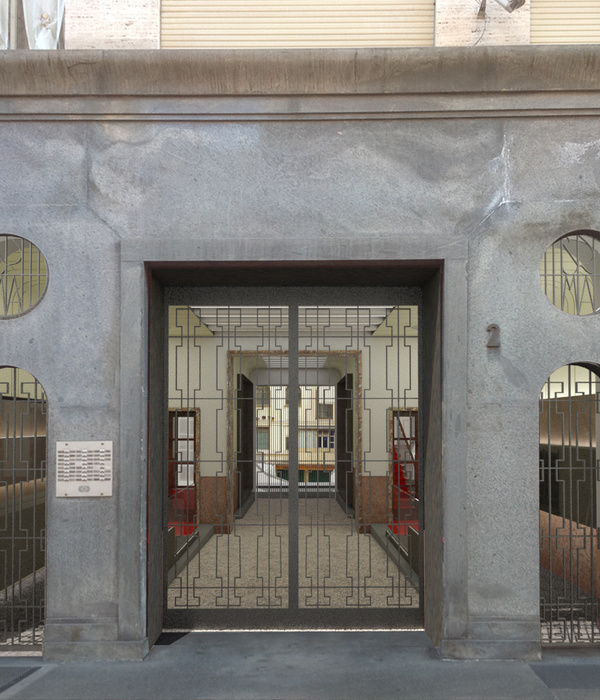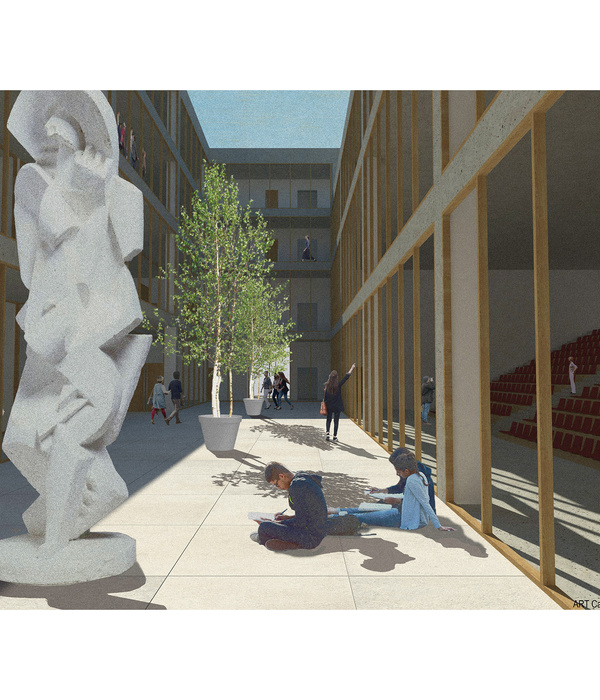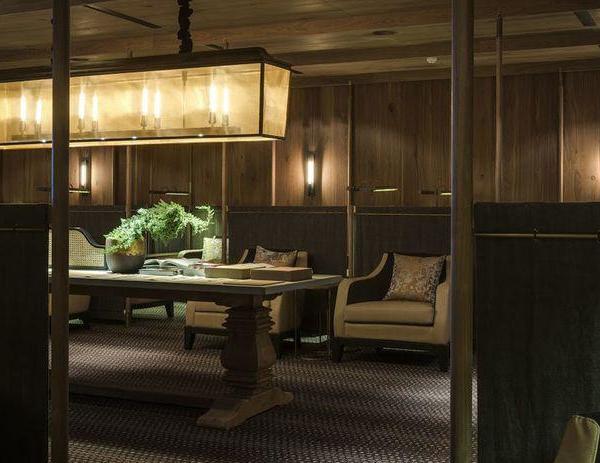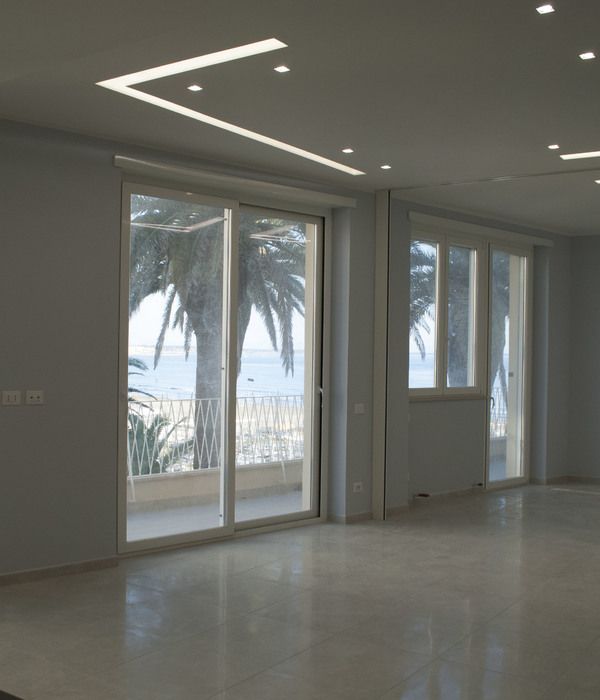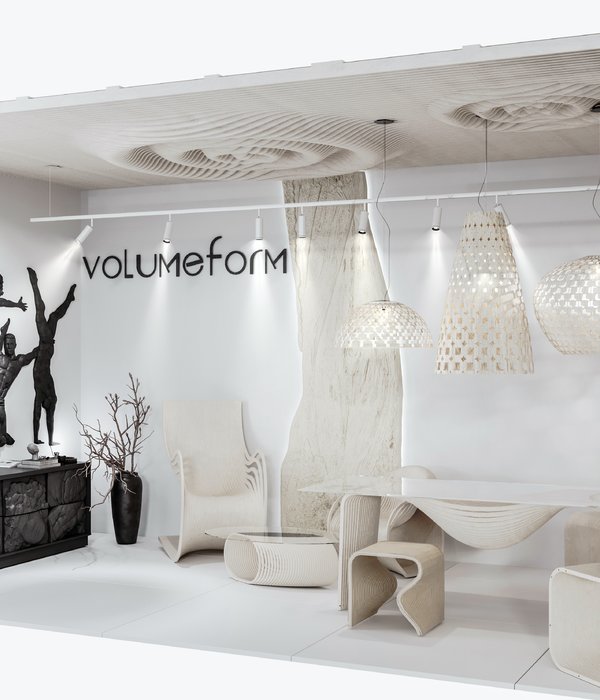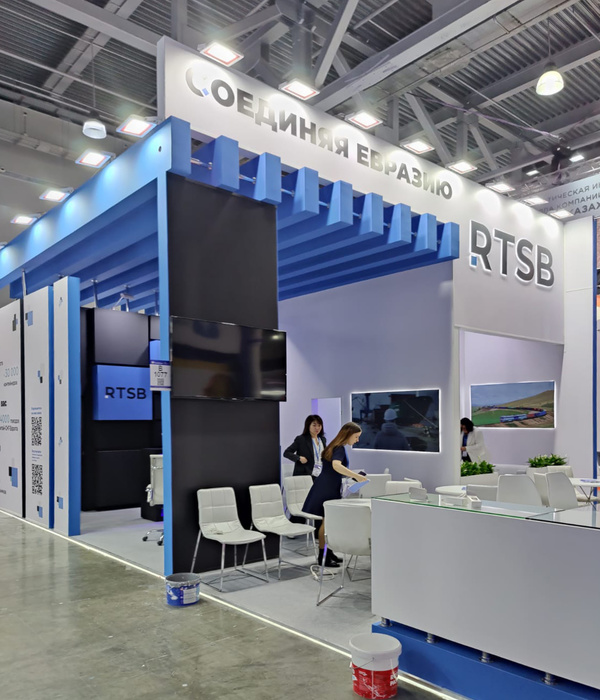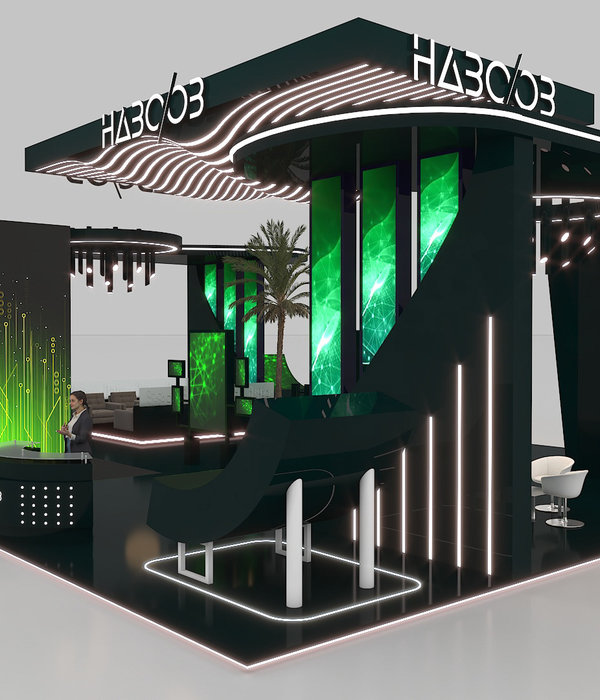Luum堂是墨西哥图卢姆一个名为Luum Zama的新住宅开发项目的配套设施之一。图卢姆知名度的不断攀升,让许多开发商都寻求最大限度地开发地产销售,他们中的很多人砍伐了现有丛林,越过法规开发建设。与之相反,Luum Zama开发项目在其 8 公顷的土地上预留了 50%的面积用以保存现有植被,同时实施森林再生计划,种植当地特有的植物。Luum Zama的总体规划也是由Co-Lab设计事务所设计的,事务所致力于让人们意识到保护该地区自然资源的紧迫性,以及提升规范建设的意识。
Luum Temple is part of the amenities of a new residential development called Luum Zama, in Tulum Mexico. Tulum’s surging popularity has brought a lot of developers seeking to build maximum sellable areas, many of whom clear cut the existing jungle and build over the regulations. In contrast, The Luum Zama development sets aside 50% of its 8 hectare area for the conservation of existing vegetation while also implementing a reforestation program with endemic plants of the region. Luum Zama’s masterplan was also designed by Co-Lab Design Office, who are keen on raising awareness to the urgency of conservation and protection of the natural resources in the area and regulation of the construction.
▼项目俯瞰,aerial view of the project © Pakal Egger_Tonatiuh Egger
▼项目概览,overview of the project © top: Cesar Bejar; bottom: Co-lab Design office
这座庙堂位于开发项目的中心地带,坐落在一片原生丛林保护区内,只能步行前往,提供了一个非常适合沉思、放缓心情的幽静自然环境。轻柔的微风穿过丛林树冠和开放的结构,与富有生机的斑驳光影相映成趣。五面敞开的结构可用于举办各种疗养活动,包括瑜伽、冥想、研讨会和社区聚会。
In the heart of the development, the temple is nestled in a conserved area of native jungle and accessed only by foot, offering a quiet natural setting perfect for reflection and slowing down. Gentle breezes pass through the jungle canopy and the open structure, animating a rich play of dappled light and shadows. The open five sided structure hosts a variety of healing programs including yoga, meditation, workshops and community gatherings.
▼结构内部,structure interior space © Cesar Bejar
▼开放的结构适于瑜伽、冥想,open structure perfect for reflection © Cesar Bejar
受到费利克斯-坎德拉悬索式钢筋混凝土外壳作品的启发,该项目采用竹子建造了一个五面悬索式结构。拱顶相互支撑,在结构相互依存。这是一个美学上的决定,背后却蕴含着深远的意义,它提醒着社区居民彼此之间相互依赖,只要齐心协力就能取得成就。这些独立的编织竹构件是由在现场压弯的扁平竹段组装而成,螺钉固定并捆绑在一起,形成一个整体。
▼立面图,elevation © Co-lab Design office
Inspired by the work of Felix Candela’s catenary reinforced concrete shell work, the project is a five sided catenary structure made from bamboo. The arched vaults support each other, co-existing in structural dependency – an aesthetic decision with a meaningful message behind it — serving as a reminder to the community of our interdependence and the accomplishments we can achieve when we work together. Assembled from flat sections of bamboo bent on site, screwed and strapped together, the individual woven bamboo elements work together as one element.
▼相互支撑的五个悬索拱形结构,five sided catenary vaults supporting each other © Co-lab Design office
▼结构细部,detail of the structure © Co-lab Design office
CO-LAB利用参数化软件设计结构,并与建造者和竹结构专业工程师密切沟通,从而为建造者提供了精确的角度、受控的测量和不同结构件的连接点。竹拱梁由扁平竹段现场压弯组装而成,在地面上冷压成型,然后用螺钉和绑带固定在一起,作为一个整体件发挥作用。拱形梁被竖起来后,通过三角形图案的结构编织在一起,并进一步被两层连续紧密编织的竹骨架束缚在一起,两层竹骨架按相反方向交错,以保证结构的稳定性。
▼结构单体示意图,Structural component diagram © Co-lab Design office
CO-LAB designed the structure with parametric software and worked in close communication with the builders and an engineer specializing in bamboo structures, which allowed the studio to provide the builders with precise angles, controlled measurements and attachment points for the different structural components. The bamboo arched beams were assembled from flat sections of bamboo bent on site, cold molded on the ground, and then screwed and strapped together to work collectively as one element. Once the arches were raised they were woven together by a structural triangular pattern and then further bound by two continuous layers of tightly woven bamboo lattice, interlaced in opposite directions for structural stability.
▼施工过程图,construction process © Co-lab Design office
竹子在其快速收获生长周期中具有固碳作用,并且有很高的强度重量比(尤其是编织在一起时),因此是一种具有惊人潜力的领先的可持续材料。该结构经设计和计算,可抵御飓风级别的强度。用于该项目的竹子来自邻近的恰帕斯地区,以可持续方式种植。在外侧,一层当地特有的Zacate(茅草屋顶)保护建筑免受雨水侵袭,并让建筑在潮湿的热带气候中保持呼吸。
Due to the carbon bamboo sequesters during its rapid harvest growth cycle, and its high strength to weight ratio (particularly when woven together), bamboo is a leading sustainable material with amazing potentials. The structure was designed and calculated to resist hurricane forces. The Bamboo for the project was farmed sustainably in the neighboring Chiapas region. On the exterior, a layer of local Zacate (grass thatch roof) typical of the region protects the structure from the rain and allows the structure to breathe in the humid tropical climate.
▼茅草屋顶,grass thatch roof © Cesar Bejar
▼在潮湿的热带气候中保持呼吸,breathe in the humid tropical climate © Cesar Bejar
Luum堂是可持续发展的典范,它将创新设计和工程技术与手工建筑和有机可持续材料融合在一起。该项目将建筑方案与优美的场地精心交织在一起,为社区创造了一个独特的、标志性的但又融入当地环境的交流空间,是建筑师、工程师,建造者和业主之间真正的合作过程的成果结晶。我们相信,将现代设计技术与手工艺结合在一起,可以对振兴濒临消失的手工艺技术和生活方式产生积极的影响。
Luum Temple is a show case for sustainable development, it combines innovative design and engineering with artisanal building and organic sustainable materials. The project carefully weaves the architectural program with the beauty of the site to create a unique, iconic yet contextual space for the community, and brings to fruition a truly collaborative process between architects, engineers, builders, and owners. We believe that combining modern design techniques with artisanal craftsmanship can have a positive impact on revitalizing some hand craft techniques and lifestyles in danger of disappearing.
▼设计鼓励人们欣赏自然世界并与之建立联系,design help create a greater appreciation and connection to the natural world © Cesar Bejar
标志性的Luum堂和Luum总体规划可以通过设计帮助人们更好地欣赏自然世界并与之建立联系,从而鼓励可持续发展。这一点在世界各地都至关重要,但在这个曾经的旅游处女地尤显珍贵。由于当地简单且有限的法规,给了资金雄厚的开发商可乘之机来贿赂官员,迅速地将自然资源耗尽。标志性的Luum堂和Luum总体规划有助于提高人们的意识,推动在图卢姆及其他地区脆弱的生态环境中采用更可持续的方式进行开发。
The iconic Luum Temple and the Luum Masterplan can help create a greater appreciation and connection to the natural world through design hence encouraging sustainable development. This is crucial all over but particularly in formerly virgin touristic destinations where simplistic and limited local regulations allow well-funded developers to bribe officials, and rapidly exhaust natural resources. The iconic Luum Temple and the Luum Masterplan helps raise awareness for more sustainable ways of developing in the delicate ecology of Tulum and beyond.
▼夜景内部,interior at night © Cesar Bejar
▼基础平面图,footings plan © Co-lab Design office
▼平面图,plan © Co-lab Design office
▼立面图,elevation © Co-lab Design office
▼剖面图,section © Co-lab Design office
▼节点分体图,connection points analysis diagram © Co-lab Design office
▼节点大样图,structure details © Co-lab Design office
{{item.text_origin}}


